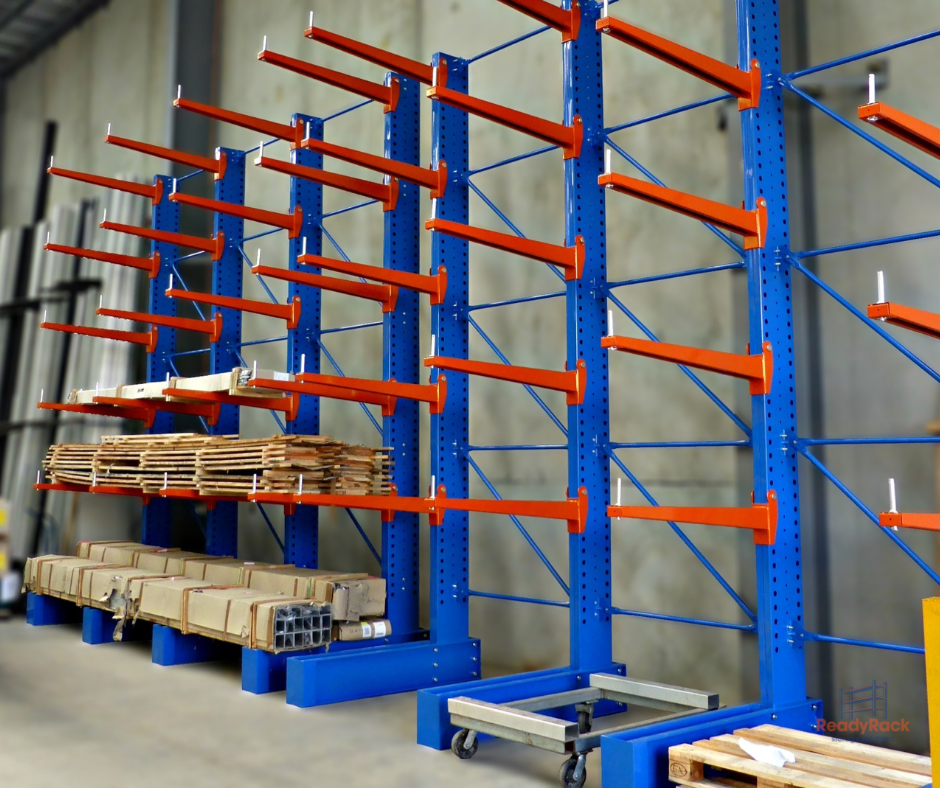Cantilever Racking is a popular choice for industrial shelving and warehouse organisation. It is designed to hold long, bulky items such as lumber, pipes, and furniture, making it an essential storage solution for many businesses. However, one question that often arises when considering Cantilever Racking is whether it needs to be anchored. In this article, we will explore the answer to this question and provide some insights into the installation process for Cantilever Racking.
What is Cantilever Racking?
Before we dive into the question of anchoring, let's first define what cantilever racking is. Cantilever Racking is a type of industrial shelving that is designed to hold long, bulky items. It consists of vertical columns with horizontal arms attached to them. These arms can be adjusted to different heights, allowing for customisation based on the size of the items being stored.
Cantilever Racking is often used in warehouses, lumber yards, and other industrial settings where long items need to be stored efficiently. It is a popular choice because it allows for easy access to items and can hold a significant amount of weight.
Understanding Cantilever Racking: Essential Information
How to Choose the Right Cantilever Racking
Does Cantilever Racking Need to be Anchored?
The short answer is yes, Cantilever Racking does need to be anchored. Anchoring is an essential part of the installation process for Cantilever Racking and is necessary for the safety and stability of the system.
Why is Anchoring Necessary?
Anchoring is necessary for Cantilever Racking for several reasons. First and foremost, it ensures the stability of the system. Cantilever racking is designed to hold heavy, bulky items, and without proper anchoring, it could tip over, causing damage and potential injury.
Anchoring also helps to distribute the weight of the items being stored evenly, preventing any one section of the racking from becoming overloaded. This is especially important for long items that may extend beyond the arms of the racking.
Finally, anchoring helps to prevent any movement or shifting of the racking, which could cause damage to the items being stored or the racking itself.
How is Cantilever Racking Anchored?
The method of anchoring for cantilever racking will vary depending on the type of racking being used and the specific installation requirements. However, there are a few common methods that are typically used.
Concrete Anchors
One of the most common methods of anchoring Cantilever Racking is by using concrete anchors. This involves drilling holes into the concrete floor and inserting anchors that will secure the racking in place. Concrete anchors are a popular choice because they provide a strong and stable base for the racking.
Floor Plates
Another method of anchoring is by using floor plates. Floor plates are metal plates that are attached to the bottom of the racking and then bolted to the floor. This method is often used when the racking is being installed on a surface other than concrete, such as wood or tile.
Wall Ties
In some cases, Cantilever Racking may also need to be anchored to a wall for added stability. This is typically done using wall ties, which are metal straps that are attached to the racking and then secured to the wall.
The Importance of Proper Installation
In addition to anchoring, proper installation is crucial for the safety and effectiveness of Cantilever Racking. It is essential to follow the manufacturer's instructions and any local building codes when installing cantilever racking.
Improper installation can lead to a variety of issues, including instability, uneven weight distribution, and potential damage to the racking or items being stored. It can also pose a safety hazard for workers who may be using the racking.
Other Considerations for Cantilever Racking Installation
In addition to anchoring and proper installation, there are a few other factors to consider when installing Cantilever Racking.
Weight Capacity
Before installing Cantilever Racking, it is essential to determine the weight capacity needed for your specific storage needs. This will help you choose the right type of racking and ensure that it is installed correctly.
Floor Conditions
The condition of the floor where the racking will be installed is also an important consideration. The floor should be level and free of any cracks or damage that could affect the stability of the racking.
Space Requirements
Cantilever Racking requires a significant amount of space, both vertically and horizontally. It is essential to consider the height and width of the racking when planning the layout of your warehouse or storage facility.
Maximizing Space Efficiency with Cantilever Racking: The Ideal Solution for Storage Challenges
Conclusion
In conclusion, cantilever racking does need to be anchored for safety and stability. Proper installation is also crucial for the effectiveness of the racking and the safety of workers. When installing cantilever racking, it is essential to follow the manufacturer's instructions and any local building codes to ensure that the racking is installed correctly.
By considering weight capacity, floor conditions, and space requirements, you can ensure that your cantilever racking is installed in the most efficient and effective way possible. With proper installation and anchoring, Cantilever Racking can provide a reliable and versatile storage solution for your business.

